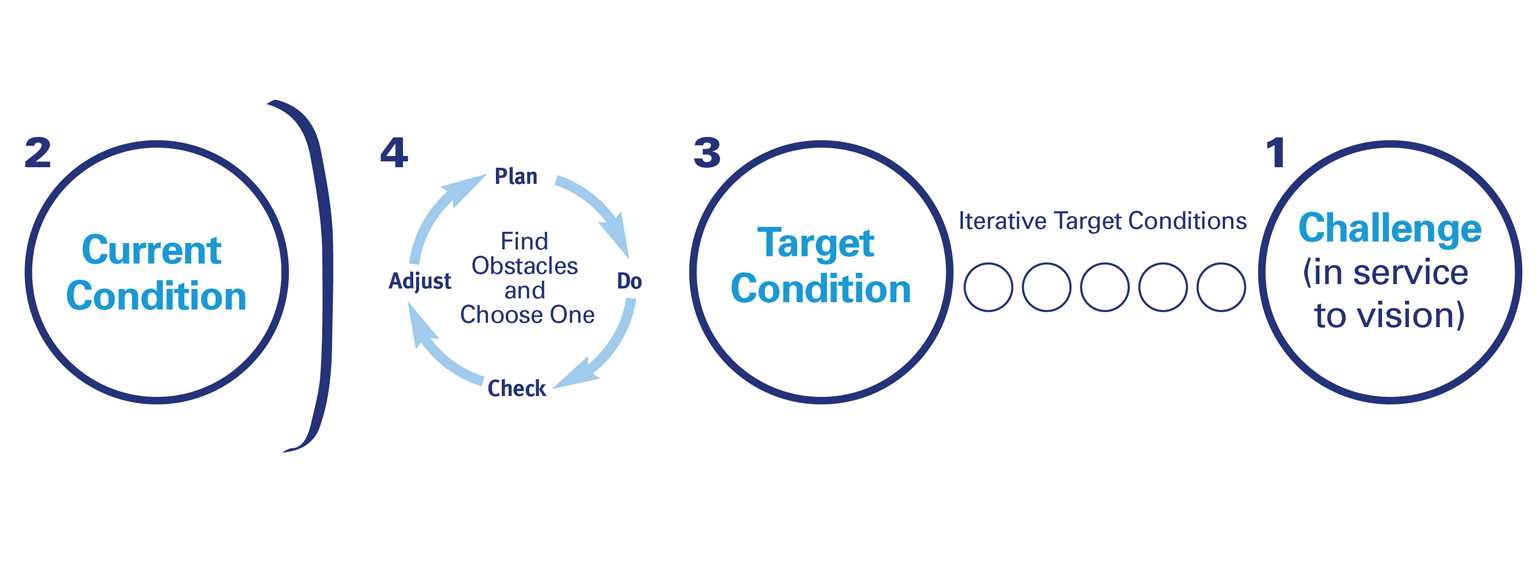This selection of Lean Posts provides vital information that will help you practice these essential problem-solving and innovation-driving routines — and make the plan-do-check-act (PDCA) process a habit for everyone in your organization.
- Carrington on Kata
In this 17-minute video, LEI Instructor Beth Carrington describes how practicing the Improvement and Coaching Kata routines help you align your organization, make innovation (large and small) happen at every level, and ensure that teams work toward goals in a systematic, scientific way.
- What Too Many Leaders Get Wrong with Coaching Kata
Think you can dive headfirst into Coaching Kata with your direct reports? Think again. Learn what to avoid or stop doing, so you can perfect your practice.
- 5 Common Signs of a Novice Kata Practice
Using an example from healthcare, Beth points out the common themes (aka mistakes) that many Improvement and Coaching Kata rookies make during their early efforts. - Building a Learning Organization with Kata
Baptist Memorial Hospital uses kata to build an “army of problem solvers.” In this video case study, Skip Steward, the hospital’s vice president and chief improvement officer, describes the “meta-routine” they follow and the results they’ve achieved. - A Video Primer on Improvement and Coaching Kata In less than five minutes, Beth describes how to use these two vital problem-solving and innovation-driving practices, explaining how supervisors who consistently practice the Coaching Kata help team members practice the Improvement Kata. In turn, she demonstrates how the Improvement Kata guides team members to improve and innovate their work processes — and contribute to the organization achieving its top-level business objectives.
She also emphasizes how the Improvement Kata and Coaching Kata establish a plan-do-check-act (PDCA) problem-solving culture through consistent, one-on-one interactions between managers and team members. - A Video Primer Visualizing the Improvement Kata as a Funnel
In less than two minutes, using a visual model, Beth describes the four routines of the Improvement Kata practice — and how the Improvement and Coaching Kata help supervisors guide their team members to connect top-level strategic objectives to their frontline work. She emphasizes how the supervisor coaches team members to break down the business goals into personal mid-term and short-term challenges, which they can then achieve through experimentation using the plan-do-check-act (PDCA) process.

Improvement Kata/Coaching Kata
Develop Scientific Thinking, a Foundation of Lean Management in the 21st Century.






I want to know more about kata